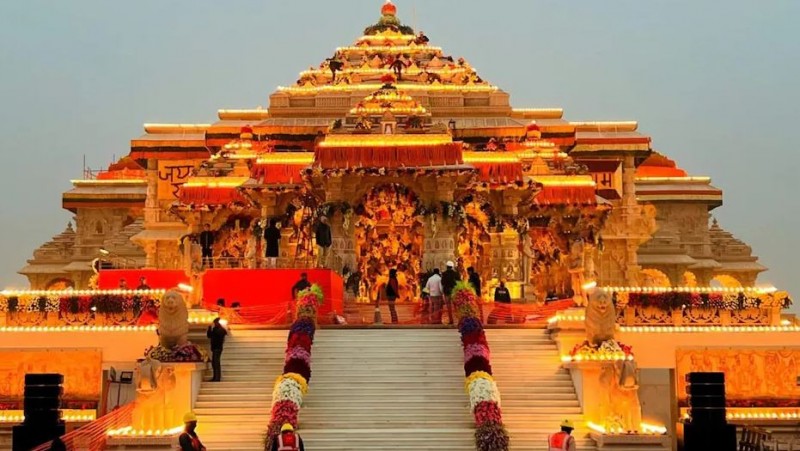
The establishment of the Ram Lalla idol inside the temple premises in Ayodhya marks a significant milestone in India's history, following the historic verdict of the Supreme Court in 2019 that led to the demolition of the Babri Masjid. The legal battle surrounding the Ram temple lasted for 134 years, traversing through various courts across the country. It began in 1885 when the case was first presented in the Faizabad District Court and culminated with the final verdict delivered by a panel of judges comprising former Chief Justice Ranjan Gogoi, Justice S. A. Bobde, present Chief Justice D. Y. Chandrachud, former Justice Ashok Bhushan, and Justice S. Abdul Nazeer.
Legal Battles:
The dispute over the Ram temple persisted for over a century, with the case moving through different levels of the judicial system. Initially filed in the Faizabad District Court, the litigation continued for 102 years before being transferred to the Allahabad High Court for another 23 years. Subsequently, it spent nine more years in the Supreme Court, where it was finally adjudicated. Mahant Raghubar Das initially filed the case in the Faizabad District Court, igniting a legal saga that would shape the course of Indian history.
Architectural Design:
The design of the Ram temple in Ayodhya was conceptualized and crafted by Chandrakant Sompura and his son Ashish Sompura, residents of Ahmedabad. Additionally, Larsen & Toubro, an engineering and construction company, contributed to the architectural design of the temple, ensuring its structural integrity and aesthetic appeal.
Artistry:
The sculptor responsible for crafting the idol of Lord Ram installed in the temple is Arun Yogi Raj, hailing from Mysore, Karnataka. His artistic prowess brings the divine presence of Lord Ram to life within the sacred confines of the temple, resonating with devotees and visitors alike.
Architectural Style:
The Ram temple is constructed in the Nagara style of architecture, a traditional Indian architectural form characterized by its towering spires, intricate carvings, and ornate decorations. This style reflects the rich cultural heritage and religious significance associated with the temple.
Materials Used:
The construction of the temple incorporates Makrana marble from Rajasthan, renowned for its exceptional quality and aesthetic appeal. The use of this premium marble elevates the grandeur of the temple, symbolizing the reverence and devotion of millions towards Lord Ram.
Financial Investment:
The total expenditure incurred on the construction of the temple stands at ₹1100 crore, with an additional estimated cost of ₹300 crore for the completion of pending work. This substantial financial investment underscores the monumental significance of the Ram temple and the unwavering dedication of devotees towards its realization.
The journey of the Ram temple from a protracted legal dispute to a majestic architectural marvel exemplifies the resilience of faith and the triumph of justice. As the sacred abode of Lord Ram, the temple stands as a beacon of spirituality, unity, and cultural heritage, inspiring generations to come with its divine presence and timeless significance.
Islam Conversion Ultimatum: Muslim Individuals Target Lone Dalit Family in Kundakala Village, UP
Mosques Erected at Sites Where 1000 Temples Were Demolished During Aurangzeb's Reign